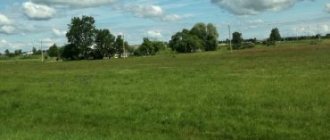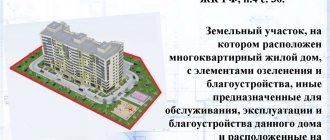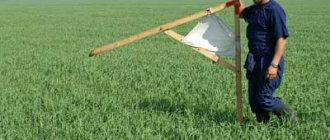Skip to content
Everything about land legislation
Ownership of a plot and land surveying, purchase and sale and rental of real estate, taxes and cadastre
Home page
Land law
Author zazemly Reading time 7 min Views 29 Published 09/08/2020
For many millennia, the earth has been one of the most valuable material reserves for human civilization. Plots of fertile soil have been and remain today the subject of wars, bloody hostilities, local and large-scale conquests, where millions of people die, are injured, and lose families and loved ones.
What is the status of a land plot? Not every one of us fully understands how valuable a resource is the usable area donated by nature. It’s easy to get an idea if you look at the statistics and historical facts. The smallest plot of land was of enormous value after the abolition of serfdom in the second half of the 19th century in Russia.
The Stolypin reform became the starting point in the process of establishing the management of land resources and realizing the value of the land allotment. Today, the map of land popularity in the Russian Federation confirms that the most in demand are plots located in the central zone of our Motherland. In other regions of the Russian Federation, interest in obtaining a building plot, running a personal subsidiary plot, or a summer cottage or garden plot for growing fruit trees and berry crops is also great.
People from large industrial centers are striving to acquire individual housing in the suburbs. There is cleaner air here and it is possible to live in more or less environmentally friendly conditions.
Maintaining personal subsidiary plots, building and connecting communications on a particular site is carried out only after the site has been assigned a certain status of land plot. A large country house or a modest house in the village is not just status and the material embodiment of the aspirations of an ordinary Russian. This is convenience, comfort, an individual solution for home decoration. Receiving an environmentally friendly food package from your personal plot is an important factor in favor of a summer house or private household plot.
A full and comprehensive study of the necessary documentation allows you to get a complete picture:
- to what extent the site can, in terms of its intended purpose, correspond to the intended use according to the cadastre;
- provides an opportunity to resolve the issues posed to oneself;
- allows you to avoid violations of the letter of the law, the onset of serious legal consequences, and, in the future, sanctions from government bodies and services.
Site status - what does it mean, features of use
The full volume of data regarding all land use criteria is entered into the Unified State Register.
It is important to find out the features and differences between the temporary and permanent status of the areas, namely:
- The entire volume of initial data is a preliminary basis for registration, that is, it is temporary.
- Based on primary information, it is legally prohibited to formalize and approve any scope of legal procedures.
- Lease agreements, sales and purchases, inheritance and donations are not possible in the legal field.
- Replacing temporary data with permanent ones. After state registration of the relevant ownership rights to a certain plot.
Failure to continuously register land for 24 months leads to serious legal consequences. They are automatically completely removed from state registration. Subsequently, the owner who missed it no longer has the opportunity to register these territories as real estate.
Individual housing construction (individual housing construction, including private household plots)
The owner of a land plot, which is located within the boundaries of a locality or city, has the same rights as city residents who live in houses that are under social and communal services.
The owner is not limited by the size of houses and land plots. But if a citizen has decided to build a cottage, he needs to coordinate the design of the future house with the relevant government agencies. In addition, such plots are subject to much higher taxes than DNP plots .
Classification of land plots
Based on the Constitution of the Russian Federation, as well as regulatory acts of the state of the Land Code, Civil Code, Tax Code of the Russian Federation, federal laws and information from the Unified State Cadastre of Lands, the following categories of plots are distinguished:
- lands that were previously accounted for accordingly, but ownership of them was canceled for various reasons beyond the control of the owner. Allotments that were subject to and subject to delimitation before 03/01/2008;
- plots that are currently registered and used by the owner for the intended purpose declared earlier when submitting an application for the allocation of a plot. This category includes temporary registration of newly created lands, but subject to the registration procedure;
If other relevant indicators are used to classify land by purpose, a wider range of land plots is determined. Main varieties:
- Territories used for agricultural work and the production of food, raw materials for various industries.
- Forestry and Water Resources Land Fund.
- Areas allocated for industrial facilities are traditionally located far from densely populated areas. Land in this category is used for the construction of housing facilities - residential apartment complexes, multi-storey and individual construction.
- Reserved areas and lands protected by law.
- Spare land plots.
- Reserve territories.
- Land owned by common use.
The land resource is privately owned in the form of high-value real estate. Today this is the most highly liquid type of material assets.
What are settlement acres made of?
All plots that are classified as land for settlement are intended for purposes other than other groups of land plots.
Today, settlement sites are of the following types:
- Social. Allotments on the territory of which buildings of government organizations or non-profit companies are located;
- Commercial. Allotments on the territory of which buildings for production are located: canteens, markets and other facilities necessary for the activities of individual entrepreneurs;
- Housing. These are considered plots that will be used for the construction of multi-storey buildings for housing, as well as the construction of cottage houses and country houses.
There are also other types of plots located in territories for settlements that do not fall under a specific category, and among them are the following:
- Areas without which it is impossible to carry out road traffic and various communications;
- Areas classified as natural and which need to be protected;
- Sites with historical as well as cultural essence;
- Areas that are included in the forest fund;
- Areas on the territory of which natural water pools are located: rivers, lakes, waterfalls, etc.;
- Areas intended for public life of people;
- Plots classified as reserves, without which the development of populated areas and economy is impossible;
- Areas with special purposes.
All of the listed types of sites are inextricably interconnected, even despite the fact that each of them is intended for different needs. Both are vital for each populated area to develop.
What types of land are allowed to be used
To obtain this or that plot of land, it is necessary to determine the legal position - whether the selected plot is free from encumbrances or not. The legislation provides for the use of relatively vacant lands as real estate for civil use, transferred to individuals and legal entities. First of all, these are territories adjacent to populated areas and within their boundaries. Then areas for agricultural purposes. The third category is land allocation for forestry or water management.
Is it possible to change the category of a land plot?
In accordance with the legislation of the Russian Federation, it is possible to transfer territory from one category to another and change its purpose. The procedure is regulated by Law No. 172-F3 “On the transfer of lands or land plots from one category to another.”
Common reasons for changing the category of a land plot include:











